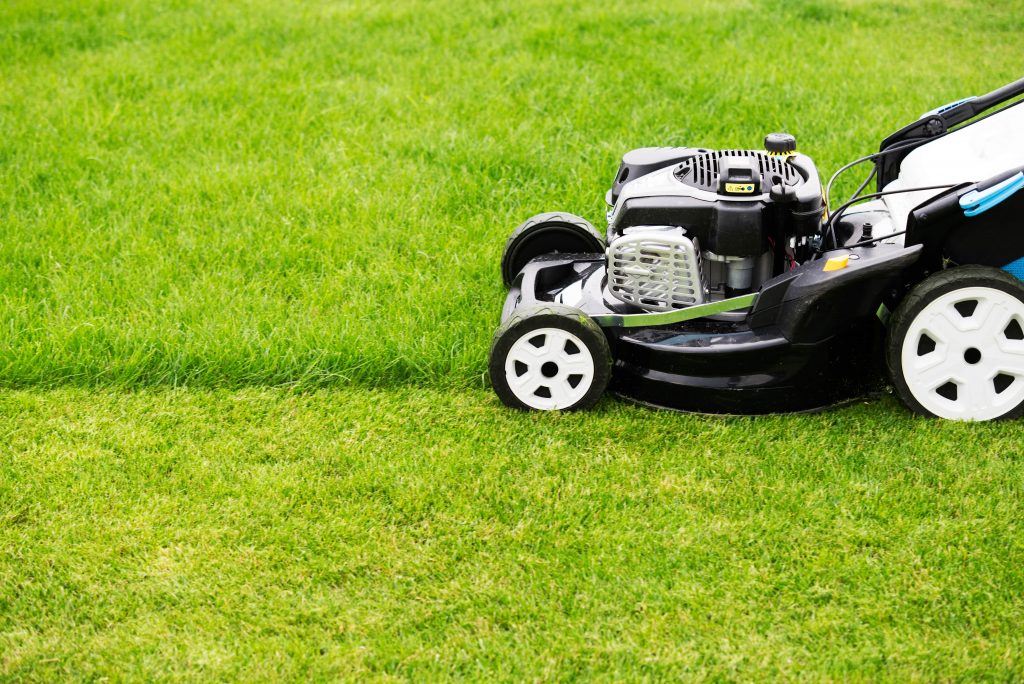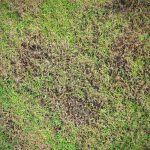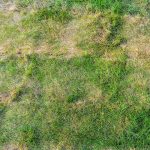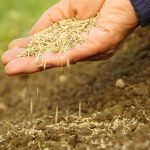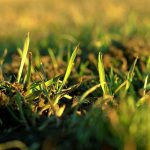Wondering what happens when you mow your grass too short? Or are you afraid you might have taken too much off on your last mow?
In this guide, we’ll explain what happens as a result of cutting your grass too short. We’ll explain how short to mow your grass, and how to treat a lawn that’s been cut too short.
How short should you mow your grass?
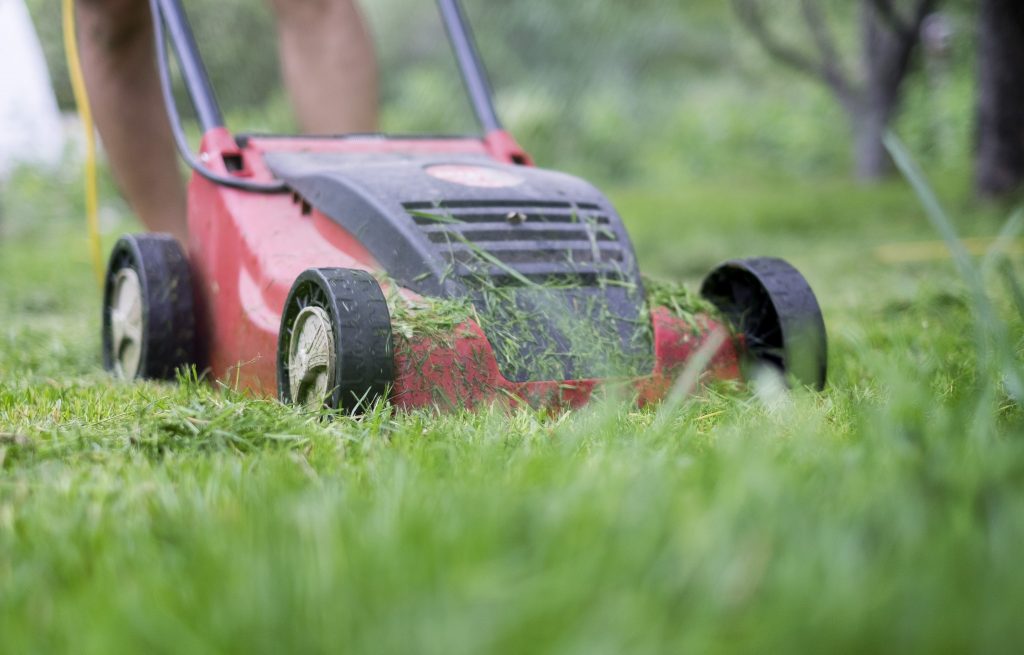
You should typically take no more than a third of the height of the grass off each time you mow it. You want to leave the grass at least 4cm tall at all times, and ideally a bit taller when heading into winter.
When in doubt, it’s best to raise your cutting height, and mow your lawn more often. This ensures that the grass isn’t left too short, and allows your grass to recover nicely after each mow.
You can lower your cutting height in the spring, when your grass is growing at its fastest.
What happens when you cut grass too short?
When you cut your grass too short, you remove most or all of the grass blades from your lawn, exposing the grass stems. When the stems are exposed to sunlight, they cannot absorb its energy – instead, they begin to turn brown and die. You need to leave your grass blades intact, so that they can absorb sunlight, perform photosynthesis, and ensure your lawn stays healthy.
As a result, when you cut your grass too short (also known as scalping it), your lawn will begin to develop brown patches, ruining its look. Your lawn will begin to grow more slowly, and may become patchy in areas.
To keep your lawn healthy over time, it’s essential that you don’t cut it too short. But don’t let it grow too long either, or you’ll have a hard time cutting it.
How to treat scalped grass
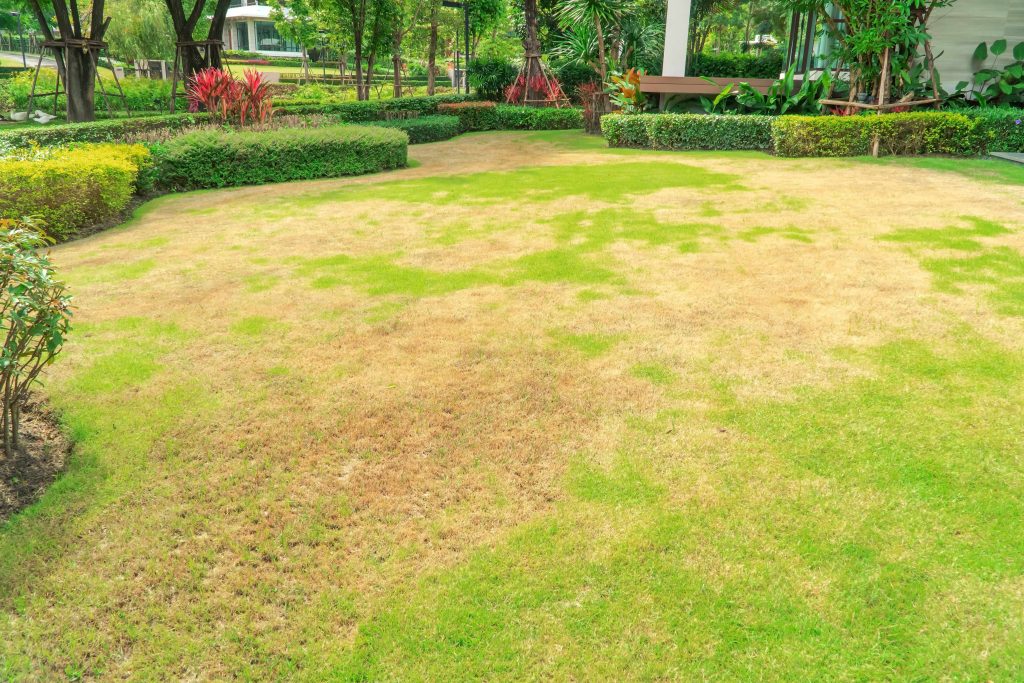
If you have accidentally cut your grass too short, here’s how to can treat it, and help your lawn to recover.
- Avoid walking on your lawn as much as possible if it has recently been cut too short. The grass stems are much more brittle than the blades, so if you walk on them, this can be quite harmful to your grass.
- Water the grass regularly but gently. This helps to prevent the stems and roots from drying out, due to being over-exposed to sunlight.
- Apply chelated iron to your lawn. This substance helps to repair a scalped lawn, as it is a part of the natural chlorophyll in grass, which is essential to its growth. You can buy chelated iron online or at garden centres – ensure to apply it according to the manufacturer’s instructions.
- If the problem is very serious, you can consider overseeding areas of your lawn where the scalping has caused the grass to become bare. Ensure to get the same type of grass seeds as you currently have on your lawn, otherwise they will grow at different rates, making it difficult to mow your grass at the right height. After applying grass seeds, ensure to water the lawn thoroughly to help them grow. You could also consider cutting out damaged areas of grass to make way for new sod, or new grass seeds, if the problem is serious.
- Avoid mowing your grass, and continue to keep foot traffic off your lawn, until you notice it begins to grow nicely again.
Other mowing tips for a healthier lawn
Other than ensuring you’re using the right cutting height, there are other tips you can use when mowing your lawn to ensure that you don’t accidentally damage your grass.
- Ensure to use a sharp blade on your lawn mower. If your blade is blunt, it can rip the grass blades, rather than cut them. This can leave a jagged edge, preventing the grass blade from healing quickly, and increasing the likelihood of diseases taking hold.
- Mow your grass when the weather is cooler. This makes it easier for your grass to recover quickly.
- Check that your mower is not leaking oil or petrol, by parking it on top of a number of sheets of butcher paper in your garage after a mow. Oil and petrol spills can cause brown patches to appear on your lawn.
- Mulch your grass clippings, returning them to the lawn to be used as a natural fertiliser. This can be a quick, cheap and easy way to improve the look of your lawn. However, don’t mulch your clippings if your lawn is full of weeds – doing so will spread the weeds over more of your lawn.
- Try to even out your lawn as much as possible. If you have only scalped certain areas, this is likely because some areas of grass are taller than others, because the ground is uneven. Read our guide to levelling a lawn to learn how to make your lawn more even.
- Use the right lawn mower for the job. This relates to the above point – if your lawn is uneven for example, you want to ensure you’re using the right mower for your garden, such as a hover mower. This will help you to get a quality, even cut, reducing the likelihood of you damaging your lawn when mowing it.
Conclusion
You’ve reached the end of our guide about cutting your grass too short.
We hope this article helped to explain the pitfalls of scalping your lawn, and how to fix the problem if you’ve cut the grass too short.
If you have any questions about scalping, or recovering from cutting your lawn too close to the ground, feel free to leave a comment below.

I’m Josh, and I’m the head writer at Lawn Care Pro.
I love everything lawns, but I’m a bit of a lawn mower nerd. I spend a lot of my free time tinkering with mowers, and planning my mowing schedule for the next few weeks.
I’m also into cars, which comes in very helpful when servicing a mower engine!


